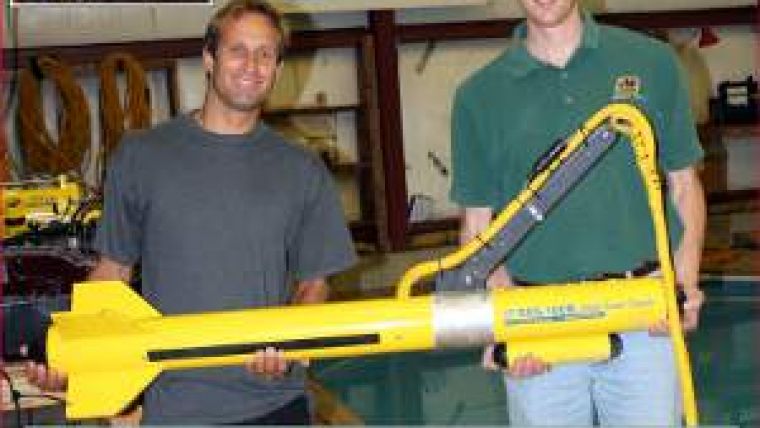Sunk WWII German U-Boat Off Brazil
The remains of the German submarine U-513 have been discovered off the coast of Brazil. The sub was sunk by bombs dropped from an American plane in July 1943. Only seven of the 53 men on board survived the attack. Researchers from Kat Schurmann Institute and Vale do Itajai University located the U-513 almost 68 years to the day after it sank. On 14th July 2011 the side-scan produced definitive images of the remains of a pressure hull on the ocean bottom. The final resting place of the U-513 had been uncovered.
Although Brazil had been technically neutral at the beginning of the war, it allowed the US to establish air bases from which it could launch attacks on submarines that were becoming a serious threat to allied shipping. As a result, Brazilian ships became a prime target for the U-boats. During the first half of 1942, German subs sank 13 Brazilian merchant vessels. In August, the U-507 sank 5 Brazilian ships in two days killing more than 600 people. In all, 21 German and two Italian submarines were responsible for the sinking of 36 Brazilian merchant ships, causing 1,691 drownings and 1,079 other casualties. The sinkings were a major reason the Brazilian government ultimately declared war against the Axis.
The 252 foot long submarine was discovered lying at a depth of 245 feet, 75 miles off the Brazilian state of Santa Catarina. The family had procured a JW Fishers side scan system shortly after opening the institute, an organization that was devoted to fostering sustainability and preservation of the oceans and coastal habitats. The primary use for the sonar was to map the reef structures off the Brazilian coast.
The hunt for the submarine started out as a hobby for family patriach Wilfredo when he was told the story of the sub's demise by a fellow mariner while sailing the Caribbean. Over the next eight years he spent many hours gathering information. He studied official accounts of the sinking, read survivors stories, talked to submarine officers in the Brazilian Navy, and even acquired a book titled "The U-Boat Commanders Handbook". But one of the most useful sources of information proved to be local fisherman. They told him about the "rippers", obstructions on the ocean floor that would grab fishing nets and tear them up. Wilfredo was provided with the coordinates of some of these rippers. Combining pieces of information gleaned from historical accounts along with the position coordinates, the researchers were able to determine the most probable locations that would hold their prize. At every opportunity a group from the institute, including Schurmann's sons, would take the side scan out and survey the underwater obstructions. The youngest son, Wilhelm, had attended a training course at Fishers factory in Massachusetts and was well versed on the operation of the side scan and use of the SONAR VIEW software.
Interestingly, the submarine was captained by Friedrich Guggenberger, who was one of the seven survivors of the sinking. The captain had gained notoriety in the submarine corps while commanding another U-boat in 1941. He torpedoed the aircraft carrier HMS Ark Royal, which despite the British Navy's efforts to tow it to port, sank the next day. After the war, the German Navy was reestablished and Guggenberger joined the service again. In the 1950s he travelled to US and studied at the Newport War College in Rhode Island. He eventually rose to the rank of admiral in the German Federal Navy and went on to become Deputy Chief of Staff in the NATO command Allied Forces Northern Europe.
Image: Main photo: Wilhelm Schurmann with sonar tech Brian Awalt and side scan at Fishers factory, Bottom inset: German type IX U-boat similar to the U-513, Top inset: U-boat Captain Friedrich Guggenberger.














